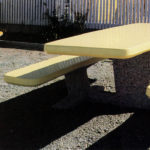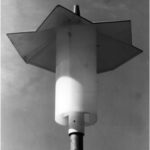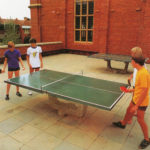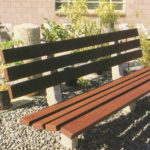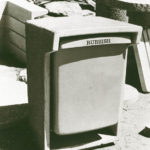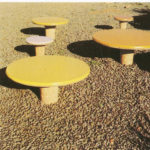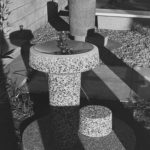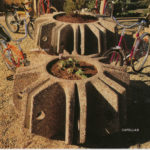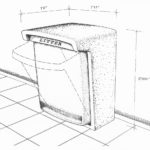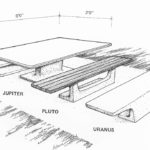Street furniture was an interest which covered a particular time within my 20 years at the ANU Design Unit.
It started when Fred Ward and I were contacted by John Overall, Commissioner of the National Capital Development Commission which was established in 1958 to develop Canberra.
Fred had just completed the furnishing of the NCDC offices in Northbourne Avenue and we were asked to prepare some designs for street furniture around Canberra when Mr Overall became aware that I had just finished a park bench design for use in the ANU.
At about the same time Henry Satrapa (a monumental stonemason in Queanbeyan) had started to make some rather ugly letterbox designs in precast concrete under his business name of Sunset Street Furniture. He asked me if I was interested in designing a range of street furniture on a royalty basis which I accepted on the understanding that if ANU purchased any there would be no royalty paid.
Over a period of about 20 years I ended up designing many pieces for Henry and he was shipping them all over Australia – despite their weight, some of which were over a tonne. An illustrated colour catalog was printed in the early 1980s which became a leader in this field.
At the ANU however, we needed a street directional system which required designs which were flexible in use and aluminium was more suitable in many ways particularly as we could handle the making of them within our own maintenance facilities which made it more convenient and lower in cost.
We had the satisfaction of being the pioneers in good street furniture based very largely on plastic moulds and precast concrete units. These suited Sunset’s manufacturing techniques and skilled staff and it showed that street furniture need not be ugly and badly thought through from a public utility point of view. We made one or two mistakes in the learning process – especially having to realise that we were rather designing to combat vandalism rather than for graceful elegance. Concrete is a good material for outdoor use but it has to be designed with care – all reinforcement had to be galvanised and sections had to be beefed up beyond elegance if maintenance was to be reduced.
Visually exposed surfaces had to be water washed to reveal the aggregate to avoid unsightly staining and purchasers began to realise that sometimes stainless steel items could be more vandal proof than concrete, justifying the extra expense in reduced maintenance.
Competitors became inevitable with stainless steel furniture, even recycled plastic furniture which was not very graceful, but when Henry died in the late 1990s the business came to an end and I heard no more from the company.


